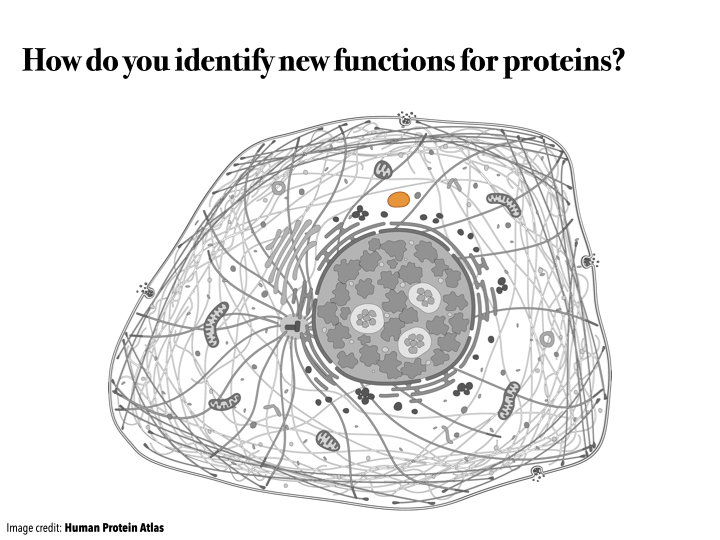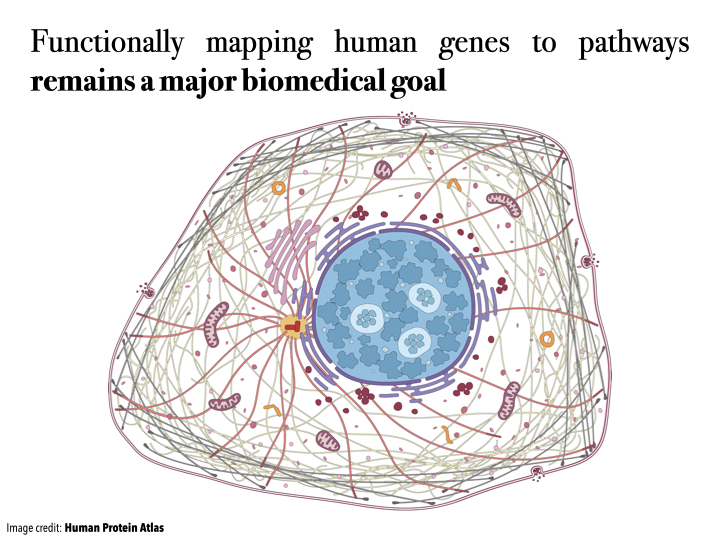Gene Query
How do we identify new protein functions for proteins? If we have a hypothesis about the little orange protein, we might go to the lab to test it in order to see if it interacts with somebody or see if it participates in a process that we happen to study.

There are a lot of different approaches that we can take in order to identify the function for these proteins. But again, all of these are hypothetical and require this direct testing in the lab. Now we can expand this concept from the single orange protein to all of the proteins in the cell, and it turns out that functionally mapping human genes to pathways, it still remains a major biomedical goal.

I imagine that most readers are working towards a goal that looks something like this: you have a gene, or a protein, or a process that you’re trying to better understand what it could be doing in your system. The question that that is driving this project is how can we save time when testing a new idea?
This project is primarily centered around a single question:
What does [insert favorite gene] do?
Of course, the answers are much more complicated than the single question. But, this question serves as a starting-point for inquiry.
Search
In order to identify the functional annotation of a single gene, begin with a query. Entering a single gene in the search box produces a series of tables and plots that identifies a functional map of the processes that gene might be involved in. In some cases, querying a gene with known functions will identify genes with well-established connections to the query gene; in other cases, new genes and new biological process might be identified, suggesting there is more to discover for well-known pathways. Querying unknown genes is especially powerful, as the associated genes and pathways provide a starting point for an otherwise difficult problem to prioritize experimentally.